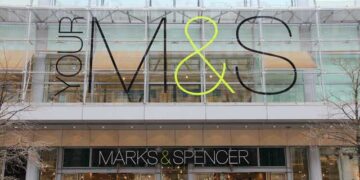Retail prices have slipped by 2.2% in the New Year, a 0.4% increase on last month – British Retail Consortium & Nielsen Price Index
For the last year, we’ve been hearing about pricing “concerns” in the wake of COVID-19, and sliding prices certainly aren’t showing any signs of stopping. Non-food prices have fallen by 3.6% in the UK in January alone, as shops have been forced to slash prices on excess stock that they could not shift over the Christmas period.

The Global Pandemic Arrives
Beginning with the global pandemic in 2020, prices began to fall almost immediately as the world went into lockdown. In April last year the World Bank released a statement detailing the economic slump caused by the virus, and how it would see “substantially lower prices over the entirety of 2020”.
Unsurprisingly, this has continued into 2021. When you compare the January drops with the 3.2% fall in December, the rapidly declining, new year prices don’t seem so much of a shock. But it could still have a detrimental effect on the British economy, as well as on the pockets of consumers.
Why are Prices Still Falling in 2021?
“The recovery in retail sales fell flat in December,” Samuel Tombs of Pantheon Macroeconomics explained. This slump, according to recently released data, has been caused by non-retail prices declining at an alarming rate, as a result of the largest fall in retail sales in history. The plunge in retail prices is directly linked to the culture of Christmas consumerism, which has all but disappeared in the face of nationwide lockdowns. Stores, and small business owners alike, have been forced to cut prices to get rid of the goods that shoppers could not purchase physically.
For some, this will be a welcome relief – the usual financial tensions that January brings to most people post Christmas, have been eased somewhat by prices that are continuing to fall. BRC Chief Executive Helen Dickinson stated that “post-Christmas sales and the national lockdown drove non-food prices down, especially for clothing and DIY goods.” In a bid to impact lack of customers, retailers are focused on keeping prices at these levels, in order to gain ground on their online sites. Fortunately, 2021 may see markets returning to some semblance of normality, as trading battles the ongoing economic slowdown.
Is Food-Retail Affected?
Food prices had been on a steady upward curve in the winter of 2019, after reaching their peak in the UK in 2014. During 2020, however, this increase slowed to the lowest rate of inflation in the last 4 years. This is much the same as non-food retail, as essential stores compete to draw maximum sales and are holding prices to offer customers the best value possible. The domestic market leaders, the Big 4, are seeing self-inflicted price drops to compete with foreign interests like Aldi and Lidl.
Nielsen head of retailer insight Mike Watkins stated “food retailers remain locked in a battle for market share and continue to cut prices.” In January alone, food inflation eased to 0.2%, falling from a 0.4% inflation rate in December 2020. Ambient food products have been least affected, with prices rising by 1.7%, a decrease from the 2.3% in December, while fresh produce prices have fallen for the second month in a row.
Continually falling prices tell us that the global slowdown is still very much in effect, and likely will be for the foreseeable future while markets recover, be they local or International. Coupled with the EU trade deal and looming shadow of BREXIT, the uncertainty of physical shopping in general, and with no end date for the current lockdown, shoppers will continue to see fluctuation in retail prices across the board.












